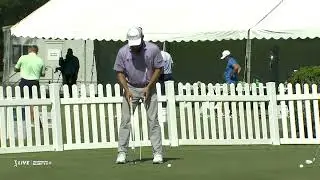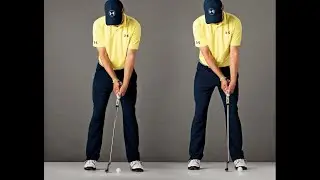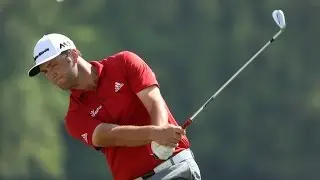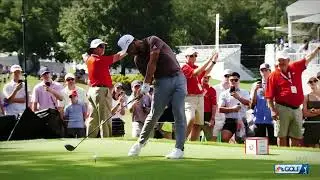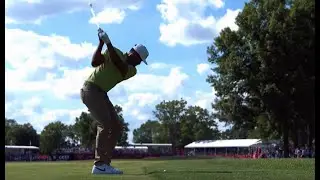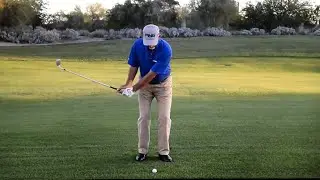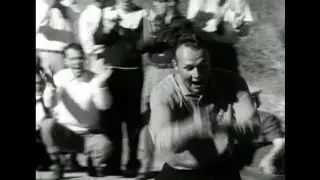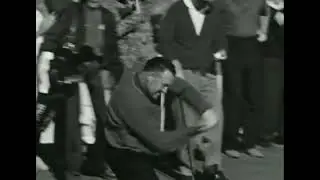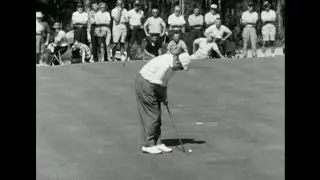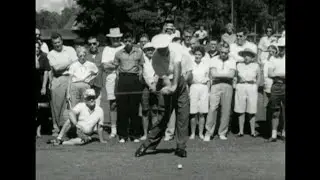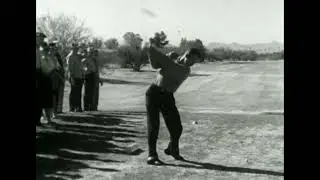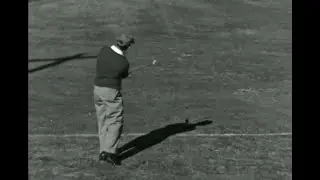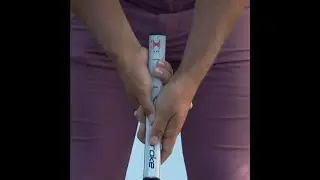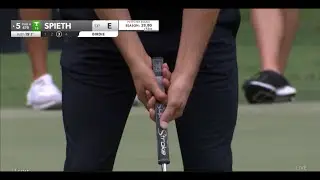Patrick Cantlay / A Stable Lower Body is Essential For GREAT Putting! - *READ THE DESCRIPTION!! 👍👍
Patrick Cantlay demonstrates a rocksolid, stable lower body...
Want to know a way to improve your putting from a stabilized platform? Did you ever build a children’s swing set? You’ll need two A frames, a pole between, eye bolts, some chain, and a seat. The eye bolt is the fulcrum of the swing set. When a kid (or you) jump on the seat and start kicking the fun ride begins, but if you don’t anchor down the legs of the A frame the ensuing wobble get’s your attention! So what does this have to do with improving your putting? The human spine just happens to hold a spot that acts as the eye bolt fulcrum of the kids swing set. The C7 vertebrae (big bone at the base of your neck) is where it’s at. When you perform a normal putting stance the putter grip should aim on an imaginary line through your chest right up to that “eye bolt” vertebrae. A normal putting stroke should rotate around that ‘fulcrum’ moved by the scapula; the only real swinging motion in that thing we call a golf swing. Now here’s the rub, what if you’re not anchored down like a swing set? What can you do to stabilize you foundation like a concrete weight under each foot?
External rotation of the femur/thigh is done by squeezing your glutes; each foot can torque/rotate outward. With your feet on the ground, you’ll feel like they twist into the turf. Pretty stable? Sure thing, but wait just a minute for a very important detail. I recently studied an academic web presentation on the function of the foot and ankle. There is a small detail that most, if not all of us neglect that can lead to an unstable platform; our big toe. When the big toe engages the ground the entire lower leg musculature can fire and stabilize the stance. Without the big toe connecting with the ground only the big outer muscles engage. Want to improve your putting with a more stable stance? Put your big toe on the ground, and roll the ball to the hole!
The best putters in the world eliminate unnecessary movement and hone a stroke that is built around a stable lower body. Key to achieving that is a stable pelvis… and improving that alone will make you a better putter your next time out.
Putting represents about 42% of the strokes played in the average round of par golf and is, in many ways, a miniature version of the full swing, yet perplexingly, it remains the area of the game least taught, least seriously practiced and, perhaps, least understood. The majority of coaching articles and videos, manuals and textbooks suggest “feel” as the key to success, along with a good technique. However, thinking logically, a well balanced, consistent platform is necessary to replicate the stroke that enables you to develop that “feel” to hole putts. So, what factors contribute to a consistently well-balanced platform to putt from?
Strength may not spring to mind, but I’m of the firm belief that putting is a strength exercise. It is strength which gives you a stable posture and balanced pivot point, which is essential to the putter being returned consistently square to impact from address.
It is also often advised by golf teachers that it is best to stand comfortably at address and relaxed over the ball prior to hitting the putt. However, it has been my experience that “comfortable and relaxed” does not necessarily translate into “well-balanced” and (potentially) creates an individual style of putting which often encourages (and indeed requires) a degree of manipulation during the stroke. I believe one of the absolute key fundamentals to good putting is a strong, balanced set-up.








